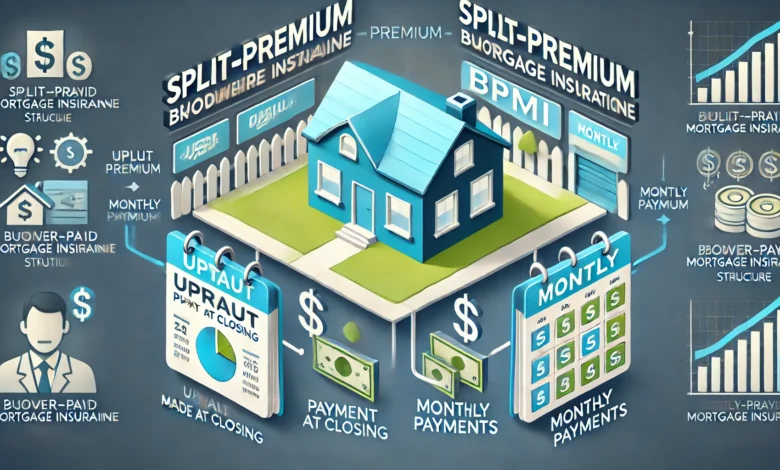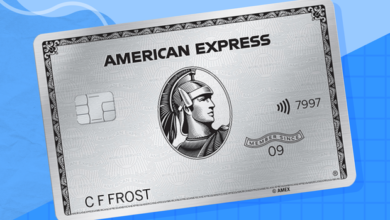What Type of BPMI Structure Has Both a Monthly Payment and an Upfront Payment?

When navigating the world of mortgages, one essential aspect often overlooked is mortgage insurance. Specifically, Borrower-Paid Mortgage Insurance (BPMI) can significantly impact your payments and mortgage terms. For borrowers who can’t provide a traditional 20% down payment, BPMI becomes a tool to help secure a loan, often at the cost of an added monthly premium. But did you know that there’s a type of BPMI structure that combines both a monthly payment and an upfront payment? In this article, we’ll dive deep into this combined structure and explain its pros, cons, and scenarios where it might be the best fit.
What Is BPMI and Why Is It Needed?
BPMI, or Borrower-Paid Mortgage Insurance, is a type of insurance required by lenders when a borrower makes a down payment of less than 20% of the home’s purchase price. It protects the lender in case the borrower defaults on the loan. The premiums are paid by the borrower, and BPMI is one of the most common forms of mortgage insurance, especially for conventional loans.
BPMI typically comes in three structures:
- Monthly Premium BPMI: Paid as part of your monthly mortgage payment.
- Single Premium BPMI: A one-time payment made at closing.
- A Combined Structure: A unique option that requires both an upfront payment and ongoing monthly payments.
This article will focus on the third option, answering the question, “What type of BPMI structure has both a monthly payment and an upfront payment?”
Understanding the BPMI Structure with Monthly and Upfront Payments
The combined structure is known as the “Split-Premium BPMI”. Unlike the pure monthly or single premium BPMI options, split-premium BPMI requires borrowers to make an upfront payment at the loan closing, reducing the size of the subsequent monthly premiums. Essentially, it provides a middle ground between paying a large lump sum and spreading the insurance cost over the life of the loan.
This approach is often attractive because it allows borrowers to lower their monthly payments without committing to the full expense of a single premium upfront.
How Does Split-Premium BPMI Work?
In a split-premium BPMI structure, the borrower pays part of the mortgage insurance premium upfront when closing the loan, and the remaining amount is spread across monthly payments over the mortgage term. Here’s an example of how it works:
- You pay 2% of the loan amount upfront as a lump sum at closing.
- The remaining insurance cost is spread across your monthly mortgage payments, reducing the overall monthly cost compared to a pure monthly premium structure.
By splitting the premium in this way, borrowers can take advantage of lower monthly payments without having to pay the entire insurance cost upfront. So, when considering what type of BPMI structure has both a monthly payment and an upfront payment, split-premium BPMI is the answer.
Advantages of the Split-Premium BPMI Structure
Understanding the benefits of this structure can help determine if it fits your financial situation. Some of the advantages include:
- Reduced Monthly Payments: Since part of the premium is paid upfront, the monthly BPMI payments are generally lower than a pure monthly premium option.
- Cost Efficiency: In some cases, borrowers can save on interest over the life of the loan by opting for a split-premium structure.
- Flexibility: It offers a balance between high upfront costs and long-term monthly payments, giving borrowers more control over their expenses.
Disadvantages of the Split-Premium BPMI Structure
While the combined structure offers many benefits, it’s essential to be aware of the drawbacks as well:
- Higher Closing Costs: The upfront payment can add to your closing costs, which might be a hurdle if you are tight on funds at the time of purchase.
- Less Flexibility if You Refinance or Sell Early: If you plan to refinance or sell your home soon after purchasing it, you may not recoup the upfront payment, making this option less appealing.
Comparing Split-Premium BPMI to Other BPMI Structures
Here’s a quick comparison between the split-premium BPMI and other common BPMI structures:
| Structure | Upfront Cost | Monthly Payments | Best For |
|---|---|---|---|
| Monthly Premium BPMI | None | Higher monthly payments | Borrowers who want low initial costs |
| Single Premium BPMI | High upfront cost | None | Borrowers with cash to cover upfront costs |
| Split-Premium BPMI | Moderate upfront cost | Reduced monthly payments | Borrowers who seek a balance between upfront cost and monthly payments |
When considering what type of BPMI structure has both a monthly payment and an upfront payment, remember that this combined option is designed for borrowers who want to balance their monthly payments and closing costs.
When to Choose the Split-Premium BPMI Structure
The decision to choose split-premium BPMI depends on your financial goals, budget, and long-term plans for the property. Consider the following scenarios where this structure might be advantageous:
- If you have some funds available for a moderate upfront payment but wish to keep your monthly payments lower.
- If you plan to stay in the home long enough to benefit from reduced monthly payments over time.
- If you’re looking for a flexible option that doesn’t lock you into either high closing costs or high monthly premiums.
Example: A borrower with $10,000 saved for closing costs but wishing to keep monthly payments manageable might opt for split-premium BPMI, using part of their savings for the upfront payment and benefiting from lower monthly premiums throughout their mortgage.
Conclusion
When exploring mortgage insurance options, understanding the nuances of each BPMI structure can help you make an informed decision. For those looking to balance upfront costs and monthly expenses, split-premium BPMI might be the ideal solution. By making a moderate upfront payment and spreading the remaining costs over monthly payments, this structure offers a balanced approach to managing mortgage insurance.
If you are wondering what type of BPMI structure has both a monthly payment and an upfront payment, remember that the split-premium BPMI is designed to provide both affordability and flexibility, making it a viable choice for many borrowers.
Be sure to discuss your specific financial situation and mortgage goals with a lender or financial advisor to determine which BPMI option is best for you.




